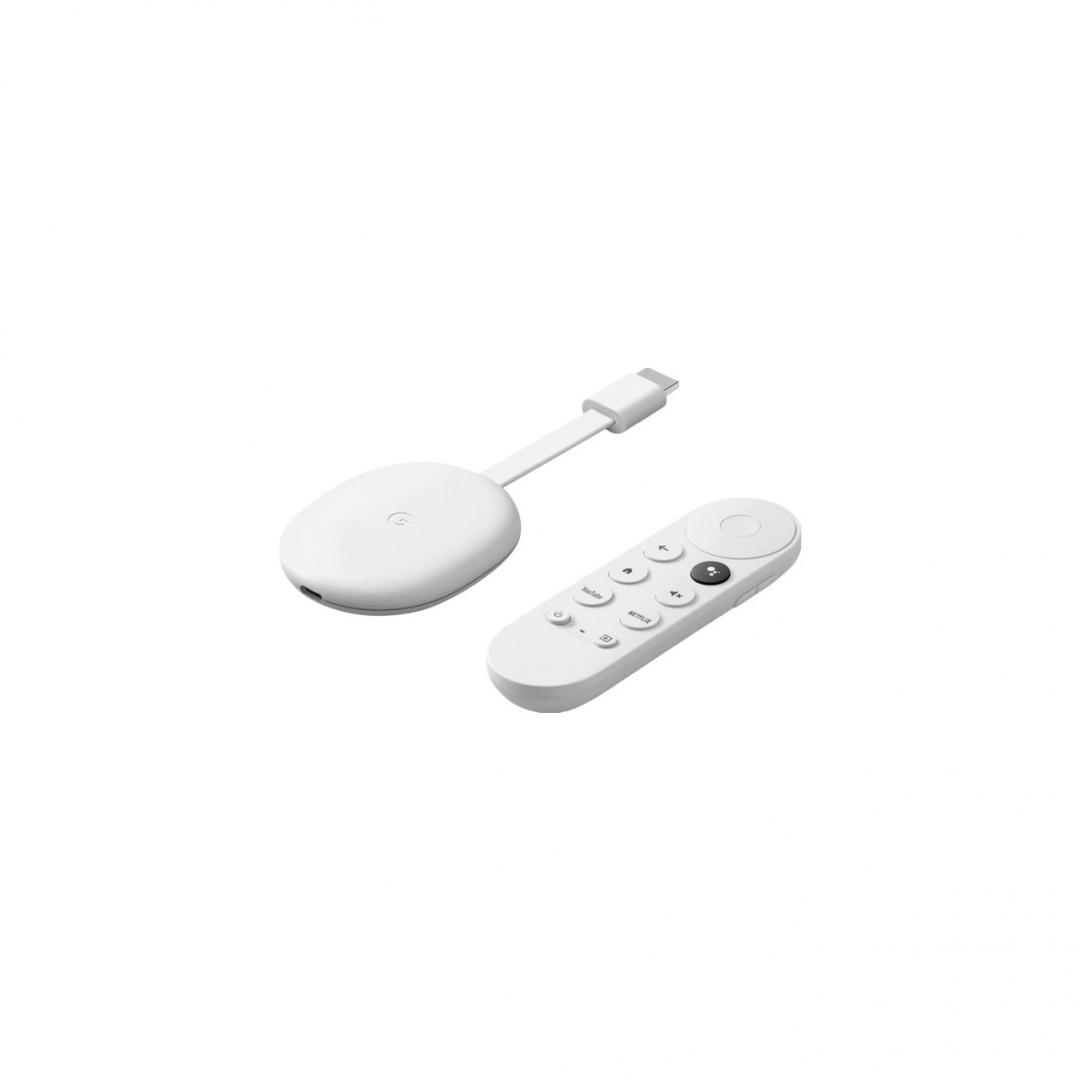Affiliate links on Android Authority may earn us a commission. Learn more.
What is Google TV? Everything you need to know
April 14, 2025

If you’ve been TV shopping, or you’re considering a Chromecast, you’ve no doubt seen the “Google TV” label. It’s even more apparent now that Google is using the title for its new streaming hardware. But what is Google TV exactly, and how does it compare against the very similar-sounding Android TV? Here’s everything you need to know before jumping in.
What is Google TV?

Google TV is a user interface (UI) designed for watching movies and TV shows. It’s based on Android TV, and you can use it on Android phones and tablets, supporting smart TVs, and any modern Chromecast. Something that’s important to note is that on phones and tablets, Google TV is a separate app, whereas TVs and Chromecasts make it the core of their software.
Google has since dropped the Chromecast branding with its latest streaming hardware, instead opting for the Google TV Streamer moniker. The new device suggests that “Google TV” will also lend its name to the company’s streaming hardware line going forward.
Google TV is a user interface, but now lends its name to Google's streaming hardware ambitions.
The key purpose of the Google TV UI is organization. It’s a launcher for apps like YouTube, Netflix, and Max, and if you search for them, you can add specific movies and shows to a Watchlist for later viewing. The software will further identify different ways to watch a title, and if you want, you can mark something as previously seen.
A big reason to mark watched titles is the For you tab, which serves recommendations influenced by your habits. These are grouped into themed carousels you can swipe through, such as “Sci-fi sagas” or “Trending.” If you want to narrow things down, you can navigate to tabs like Movies and Shows, or select Live content when it’s available. Some videos can be bought or rented through Google, and those purchases are stored in your Library.
Under the Live tab, you’ll find a selection of free channels in the recently rebranded “FreePlay” section. FreePlay offers over 150 gratis channels to peruse through. Some of these channels include The Bob Ross Channel, Comedy Dynamics, Dazn Ringside, and more. In addition, Google TV also has The Roku Channel, which provides even more free content to enjoy.
On TVs, Chromecasts, and the Google TV Streamer, you can access more streaming apps through the Apps tab. There’s no need for that on phones and tablets, since you can download them separately via the Play Store.
Google TV’s smart home credentials

A major selling point of the TV interface is support for Google Assistant voice commands, whether through your remote, a smart speaker, or a smart display. That can make it much easier to find and play content since you can use natural-language requests like “show me movies by David Cronenberg,” “rewind 30 seconds,” or “play They Shall Not Grow Old.”
By extension, you can integrate Google TV into Google Home automations and use it to control other Assistant-compatible smart home devices. As long as you’ve set it up, telling a speaker “Hey Google, it’s movie night” might dim the lights, close the blinds, and fire up your TV all at the same time. You can view Assistant-compatible security cameras on TVs and Chromecasts. Depending on your Google TV remote, it may also have a few other features, like a remappable button or Find My Remote support.
The Google TV Streamer focuses more on the smart home aspect, going so far as to act as a hub. It includes support for Matter and Thread, allowing interaction with a host of smart home products. It also brings an exclusive Google Home panel to the UI, which allows users to control various smart home devices and spaces and initiate routines like the phone Home app. It’s accessible by long-pressing the Google TV Streamer remote’s home button.
Android TV vs Google TV: What’s the difference?

Technically speaking, while Google TV is based on Android TV, it actually employs Google’s lightweight Chrome OS. That mostly doesn’t matter to the end user, but Google TV does represent the vanguard of Google’s streaming efforts — eventually, expect it to supplant Android TV completely.
There are a variety of more tangible differences, perhaps the biggest being in recommendations and its use of AI. Google TV makes heavy use of algorithms to tailor your home screen, the idea being that the more you watch, the better it’ll get at serving new things to see. With the Google TV Streamer, the platform now extensively uses Gemini for recommending and describing movies and shows. Google’s AI can fetch content overviews, detailing a show’s core details or offering a selection of user reviews. When you’re not watching content, Google TV offers an Ambient Mode that displays AI-generated wallpapers.
Alternatively, Android TV’s recommendations are less personalized, being mostly based on the apps you have installed.
Recommendations, live TV, and parental controls are Google TV's highlights.
Google TV is also able to surface live content if you’re subscribed to a service like Sling TV or YouTube TV — select a thumbnail and you’ll jump straight into the stream, skipping the app launcher. This is mostly useful for sports addicts, but it can also be handy if you’re trying to catch the news or an episode premiere.
Both platforms offer parental controls, but Google TV supports multiple child profiles under a single adult, each of which can have its own restrictions and recommendations. It also supports management via Google Family Link, whereas Android TV devices rely on system-level tools.
How to get Google TV

If you have a phone or tablet with Android 6.0 or later, you can simply download the Google TV app. There’s a good chance it’s already installed since it has replaced Google Play Movies and TV.
Otherwise, you’ll have to buy a Google TV streaming device or a compatible TV. Sony is the platform’s best-known third-party backer, but you can also get the technology through brands like TCL and Hisense, both of which tend to charge much less money than Sony by focusing on core features. Just be careful when shopping, since makers like TCL often ship Roku and Google TV versions of the same set.
After ditching its long-established Chromecast label, Google now uses its Google TV title for its hardware.
Beyond TVs, several manufacturers offer streaming devices that run Google TV natively. Of course, for the best experience, you’ll likely want a product from Google.


After ditching its long-established Chromecast label, Google now uses its Google TV title for its hardware. This starts with its Google TV Streamer. The device is billed as Google’s most advanced streaming hardware platform to date, offering a faster chipset, more RAM, and storage than its predecessors. It also supports Matter and Thread to support the streaming box’s smart home hub element. We touch on that in more detail in the next section. Notably, the device’s remote also supports Find My support and will chime in response if you misplace it beneath the couch.
Google’s Chromecast for Google TV remains a cheaper but no less flexible option if 4K streaming is your only goal. The much cheaper Chromecast with Google TV (HD) offers 1080p quality for those who don’t require high-resolution video playback. Notably, Google has discontinued both, so you’ll have to source them from third-party retailers or the used market.
Other Google TV hardware options from OEMs are also available, the most impressive being Walmart’s Onn 4K Pro TV box.

Lost remote finder
USB port adds a lot of extra functionality

Has a remote control
1080p Google TV experience
FAQs
Google TV Streamer is Google’s latest hardware for streaming and controlling your smart home. It runs Google TV, makes extensive use of Gemini AI for recommendations, and boasts a new Google Home hub with support for Matter and Thread. It also packs updated hardware, an Ethernet port, and a remote with Find My support.
Yes, putting aside any hardware you might need, or any streaming content you decide to buy or subscribe to. There’s usually little if any free content direct from Google, but if you don’t want to pay for subscriptions, you might try free services like Tubi, Philo, Pluto TV, and of course YouTube.
Yes, Google TV does support Crunchyroll, and available content will appear in searches. You can watch for free, but you’ll have to subscribe to get the full content library and watch ad-free.